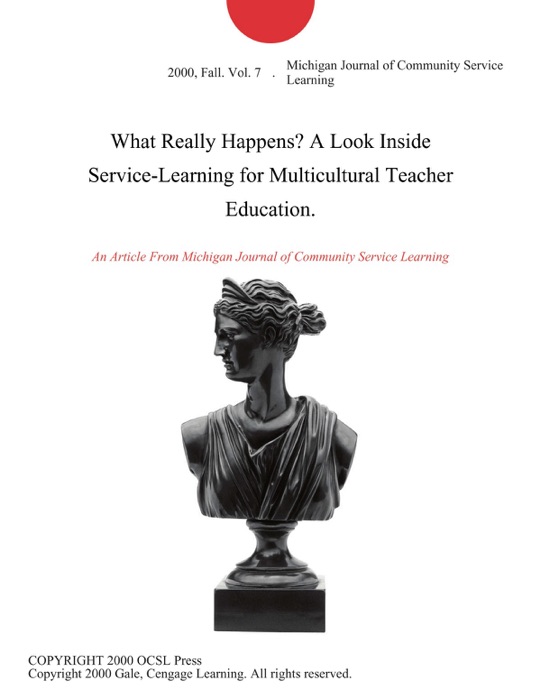(DOWNLOAD) "What Really Happens? A Look Inside Service-Learning for Multicultural Teacher Education." by Michigan Journal of Community Service Learning * Book PDF Kindle ePub Free

eBook details
- Title: What Really Happens? A Look Inside Service-Learning for Multicultural Teacher Education.
- Author : Michigan Journal of Community Service Learning
- Release Date : January 22, 2000
- Genre: Education,Books,Professional & Technical,
- Pages : * pages
- Size : 231 KB
Description
What really happens in service-learning, particularly when it is utilized in conjunction with a multicultural education course for preservice teachers? In this paper, we investigate the extent to which service-learning provides the kind of experiences preservice teachers need to become multicultural people and educators. According to Nieto (1996), most prospective teachers, regardless of cultural or social backgrounds, were raised and educated in pervasively monocultural, Eurocentric, English-speaking environments. Often, they know little about (and hold biases against) the primary constituents for multicultural education: people marginalized in U.S. society, "parents and children of color and/or of low-income backgrounds, children who are disabled, gay or lesbian, and their parents or adult supporters, and girls" (Sleeter, 1996, p. 231). Multicultural education seeks to prepare teachers as educational allies and advocates for youth from these groups. Nieto argues that "becoming a multicultural teacher, means first becoming a multicultural person" (p. 353) and that this process depends upon self-reflection and re-education. Preservice teachers need to question their own racism and biases, learn more about cultural diversity and pluralism, and grapple with realities from multiple perspectives. Otherwise, their approach to multicultural education will be shallow and superficial. Community-based learning, or learning experiences situated within diverse and low-income neighborhoods and organizations, can prod preservice teachers to step outside their life experiences, identify children as community members, regard communities as educational resources, and adapt learning to children's life experiences (e.g., Mahan, Fortney, & Garcia, 1983; Sleeter, 2000). Yet, community-based experiences are rarely part of teacher education programs (Zeichner & Melnick, 1996). A "field" experience usually refers to placement in a school, not in a neighborhood context. Even if the school has a culturally diverse and/or low-income student population, it does not follow that preservice teachers become attuned to community views and concerns. Unless preservice teachers work with teachers and principals who view communities as educational resources--as significant learning places for youth--school experiences alone are unlikely to foster cultural awareness, or support alliance and advocacy (e.g., Tellez, Hlebowitsh, Cohen, & Norwood, 1995; Zeichner, 1992).